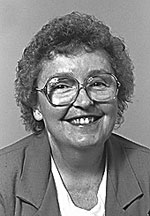Cornucopia / Cynthia Dewes
What should motherhood really mean?
 At present, I am reading a novel called The Ten Year Nap by Meg Wolitzer. It’s a fictionalized account of a woman who left the work force to have a baby and never returned to it, based on the author’s own experience. It’s an interesting and informative account of a culture somewhat foreign to a woman of my generation.
At present, I am reading a novel called The Ten Year Nap by Meg Wolitzer. It’s a fictionalized account of a woman who left the work force to have a baby and never returned to it, based on the author’s own experience. It’s an interesting and informative account of a culture somewhat foreign to a woman of my generation.
The principal character’s mother was an early advocate of the feminist movement when it appeared during the mother’s middle age. She was involved in consciousness-raising sessions and empowerment seminars, while her rather passive husband lived a separate life in the same house.
Her three teenage daughters fended for themselves and felt they had lost the attention and nurturing they formerly had been given. But, as women themselves, they wanted to support their mother in seeking women’s rights. They dutifully fulfilled the mother’s ambition for them to be educated, professional women who expected to make their own way in the world.
Amy, the book’s protagonist, becomes a lawyer and meets her lawyer husband in the law firm where they both work. She likes her work well enough, but is not passionate about it or even about the law. She studied law because she was a bright student and it seemed to offer good opportunities.
When Amy becomes pregnant, she and her husband agree that she will return to the office as soon as her maternity leave is over. They live in New York in an expensive apartment geared to their upwardly mobile lifestyle, as all their friends do, and they need both incomes to pay their bills.
Here’s where the real story begins because Amy simply can’t bear to leave her little boy when her maternity leave ends. She becomes a “stay-at-home mom,” a description that she despises, and the novel begins when her child is 10 years old. Hence, the 10-year “nap.”
Amy meets other mothers who have given up their professions to stay home with their kids. Only one or two seem to miss their jobs, and most of them volunteer at the private school that their children all attend. One sends out résumés and attends job interviews dressed up in her professional clothing. Apparently, it’s just for the fun of describing these meetings to her friends over their daily coffee sessions.
Some of the mothers still work as scientists or museum directors or whatever, and are treated with a mixture of envy and disdain by Amy and her friends. The novel offers the entire gamut of arguments for and against staying home with kids while the family is supported by a working husband.
Speaking from my own experience, some of these ideas seem false. Although there were many days when I longed for an adult conversation and a diet not limited to macaroni and cheese, I never felt thwarted professionally. I considered raising healthy, functional children to be my profession for a time. As I’m fond of saying, I believe women can have it all, just not all at once.
Amy’s mom was in the first generation of women to realize that not only could they have both fulfillments, but also should have the right to do so. Amy’s age group tries to figure out how to make it work, not always with success or without threatening a marriage.
Motherhood is not the only satisfying aspect of a woman’s life, but for a few years it should be given the most attention. Cheerfully. I’m grateful I raised kids at a time when most people understood that.
(Cynthia Dewes, a member of St. Paul the Apostle Parish in Greencastle, is a regular columnist for The Criterion.) †
 At present, I am reading a novel called The Ten Year Nap by Meg Wolitzer. It’s a fictionalized account of a woman who left the work force to have a baby and never returned to it, based on the author’s own experience. It’s an interesting and informative account of a culture somewhat foreign to a woman of my generation.
At present, I am reading a novel called The Ten Year Nap by Meg Wolitzer. It’s a fictionalized account of a woman who left the work force to have a baby and never returned to it, based on the author’s own experience. It’s an interesting and informative account of a culture somewhat foreign to a woman of my generation.